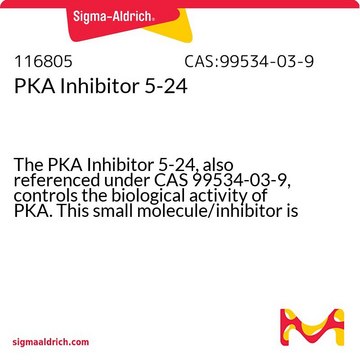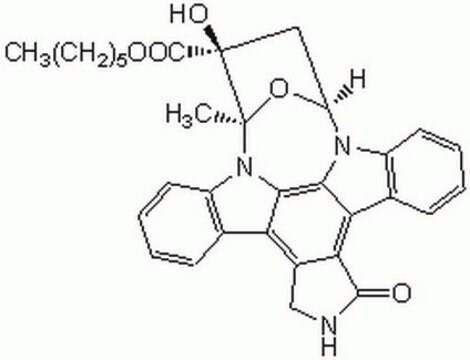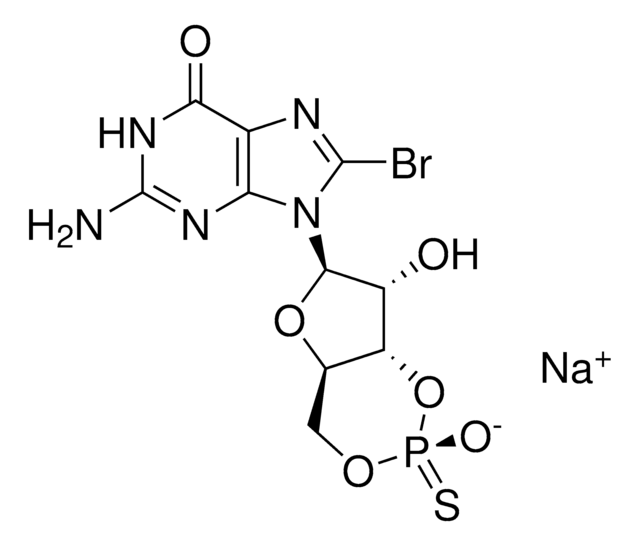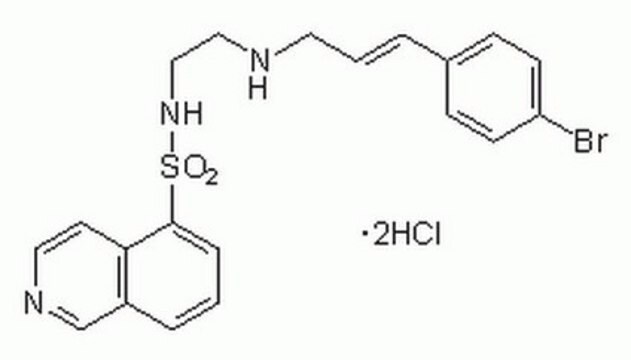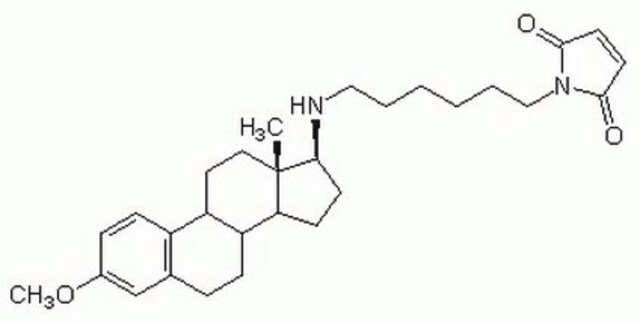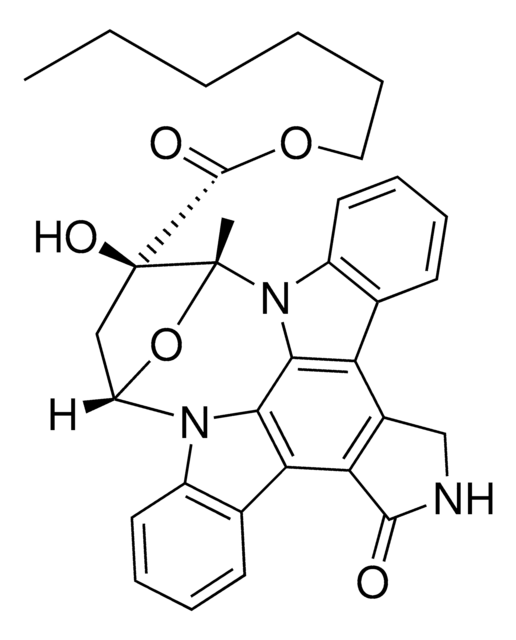P7739
Protein kinase A inhibitor fragment 5-24 amide trifluoroacetate salt
≥95% (HPLC), lyophilized powder
About This Item
Recommended Products
Assay
≥95% (HPLC)
form
lyophilized powder
mol wt
calculated mol wt 2219
composition
Peptide content, ~75%
solubility
H2O: soluble
UniProt accession no.
shipped in
wet ice
storage temp.
−20°C
SMILES string
OC(=O)C(F)(F)F.CC[C@H](C)[C@H](NC(=O)[C@H](C)NC(=O)[C@H](CC(N)=O)NC(=O)[C@H](CCCNC(N)=N)NC(=O)[C@H](CCCNC(N)=N)NC(=O)CNC(=O)[C@@H](NC(=O)[C@H](CCCNC(N)=N)NC(=O)CNC(=O)[C@H](CO)NC(=O)[C@H](C)NC(=O)[C@@H](NC(=O)[C@H](Cc1ccccc1)NC(=O)[C@H](CC(O)=O)NC(=O)[C@H](C)NC(=O)[C@H](Cc2ccc(O)cc2)NC(=O)[C@@H](NC(=O)[C@@H](N)[C@@H](C)O)[C@@H](C)O)[C@@H](C)CC)[C@@H](C)O)C(=O)N[C@@H](Cc3c[nH]cn3)C(=O)N[C@@H](CC(O)=O)C(N)=O
InChI
1S/C94H149N33O30.C2HF3O2/c1-11-42(3)70(125-86(152)59(31-50-19-14-13-15-20-50)119-85(151)62(36-68(138)139)118-75(141)44(5)111-82(148)58(32-51-24-26-53(132)27-25-51)121-91(157)73(49(10)131)127-87(153)69(96)47(8)129)89(155)113-45(6)76(142)123-63(40-128)78(144)108-38-65(134)115-55(22-17-29-106-93(100)101)81(147)126-72(48(9)130)88(154)109-39-66(135)114-54(21-16-28-105-92(98)99)79(145)116-56(23-18-30-107-94(102)103)80(146)120-61(34-64(95)133)83(149)112-46(7)77(143)124-71(43(4)12-2)90(156)122-60(33-52-37-104-41-110-52)84(150)117-57(74(97)140)35-67(136)137;3-2(4,5)1(6)7/h13-15,19-20,24-27,37,41-49,54-63,69-73,128-132H,11-12,16-18,21-23,28-36,38-40,96H2,1-10H3,(H2,95,133)(H2,97,140)(H,104,110)(H,108,144)(H,109,154)(H,111,148)(H,112,149)(H,113,155)(H,114,135)(H,115,134)(H,116,145)(H,117,150)(H,118,141)(H,119,151)(H,120,146)(H,121,157)(H,122,156)(H,123,142)(H,124,143)(H,125,152)(H,126,147)(H,127,153)(H,136,137)(H,138,139)(H4,98,99,105)(H4,100,101,106)(H4,102,103,107);(H,6,7)/t42-,43-,44-,45-,46-,47+,48+,49+,54-,55-,56-,57-,58-,59-,60-,61-,62-,63-,69-,70-,71-,72-,73-;/m0./s1
InChI key
CJBPFVMGYBOAOJ-AYVQDJQPSA-N
Gene Information
human ... PKIA(5569)
Amino Acid Sequence
General description
Biochem/physiol Actions
Storage Class Code
11 - Combustible Solids
WGK
WGK 3
Flash Point(F)
Not applicable
Flash Point(C)
Not applicable
Personal Protective Equipment
Choose from one of the most recent versions:
Already Own This Product?
Find documentation for the products that you have recently purchased in the Document Library.
Our team of scientists has experience in all areas of research including Life Science, Material Science, Chemical Synthesis, Chromatography, Analytical and many others.
Contact Technical Service